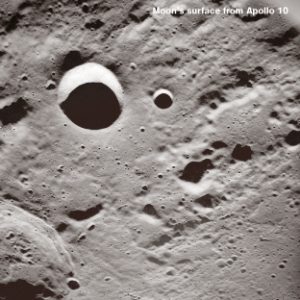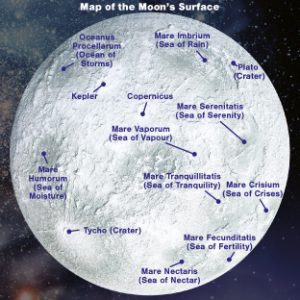The Moon’s Surface
A meteoroid is a small piece of debris in space. If a meteoroid enters Earth’s atmosphere it is called a meteor and if it reaches the ground it is called a meteorite. Most meteors burn up as they pass through Earth’s atmosphere and before they hit the ground. As the Moon has no atmosphere it is constantly bombarded by meteorites and so is covered in impact craters, some billions of years old. There is no wind or rain to wear away these craters, so the landscape does not change a great deal. The footprints of the astronauts who landed on the Moon in the 1960’s and 70’s are still there today.
One such impact crater is Tycho, named after the Danish astronomer Tycho Brahe. Tycho is a young crater, with an estimated age of only 108 million years. The crater is surrounded by distinctive long spokes that are up to 1,500km (932 miles) long and is visible from Earth.
The dark patches are plains formed by lava flows very early in the history of the Moon. They are called mare or plural maria, which is Latin for sea, because early astronomers thought these dark areas were filled with water.


